Ivan the Terrible, Part I (1944)
“Only an undivided, legitimate throne will save Moscow from her enemies and internecine conflict!”
|
Synopsis: |
|
Genres, Themes, Actors, and Directors:
Response to Peary’s Review: Peary asserts that “Ivan comes across as a hero in a Wagnerian opera,” while “everyone else seems to be trying out for a Hollywood serial, perhaps Flash Gordon or Buck Rogers”: … and he further notes that “the devious, swathed-in-black boyar princess Euphonia (Serafima Birman) would have been a great foe for Buster Crabbe.” (Peary fails to point out how masculine-looking Birman is — to the extent that I didn’t know this character was female until I read about the actress. Meanwhile, her infantile son Vladimir — played by Pavel Kadochnikov — is remarkably femme. The gender bending between the two of them is quite noticeable.) The picture’s storyline (part one of two) is fairly straightforward; as Peary writes, it “begins with Ivan’s coronation and marriage” (those are coins being poured over his head): … “takes us on a war campaign” (to Kazan): … and “after Ivan has gone from clean-shaven to having a short beard to having a mustache and short beard to having a beard that would make Rasputin envious”: … it “concludes with…” — well, I won’t say. I’ll be back with my review of Part II shortly. For now, suffice it to say that I share Peary’s views on this overrated Eisenstein film, which seems to polarize critics (and viewers) into one camp or another. If you’re curious for a deeper dive into the film’s themes, however, be sure to check out the video essay by scholar Joan Neuberger in the Criterion DVD set Eisenstein: The Sound Years (but wait until after you’ve watched Part 2 to avoid tons of spoilers). Notable Performances, Qualities, and Moments: Must See? Categories
(Listed in 1001 Movies You Must See Before You Die) Links: |
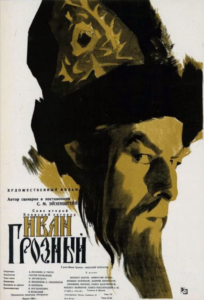
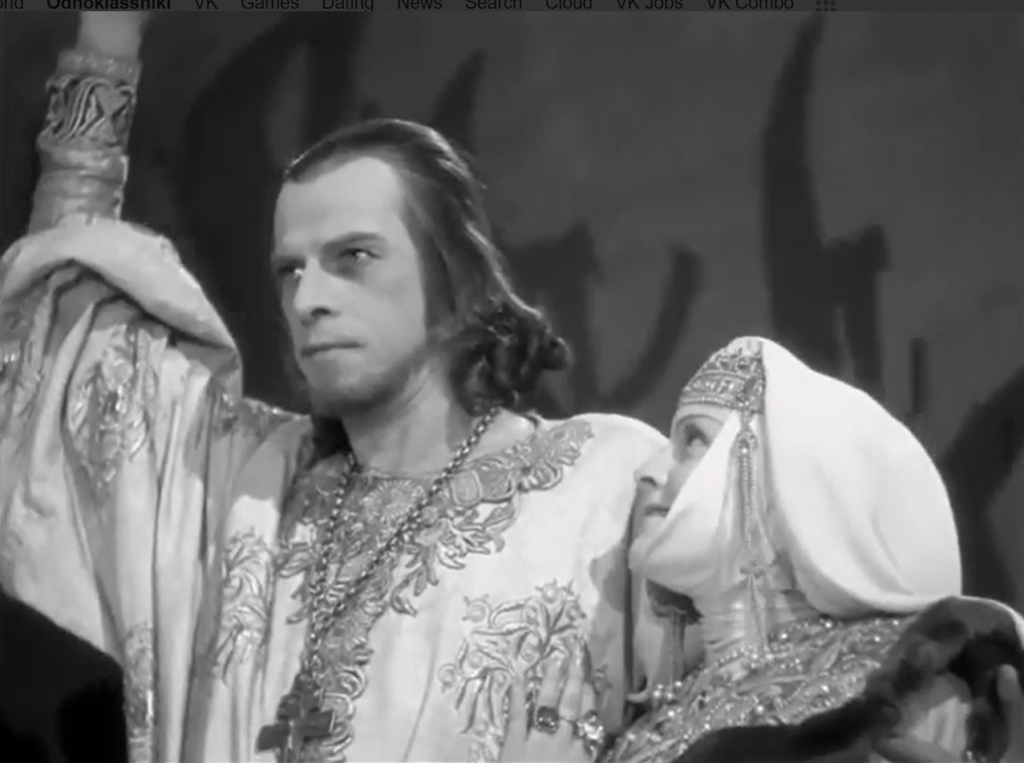
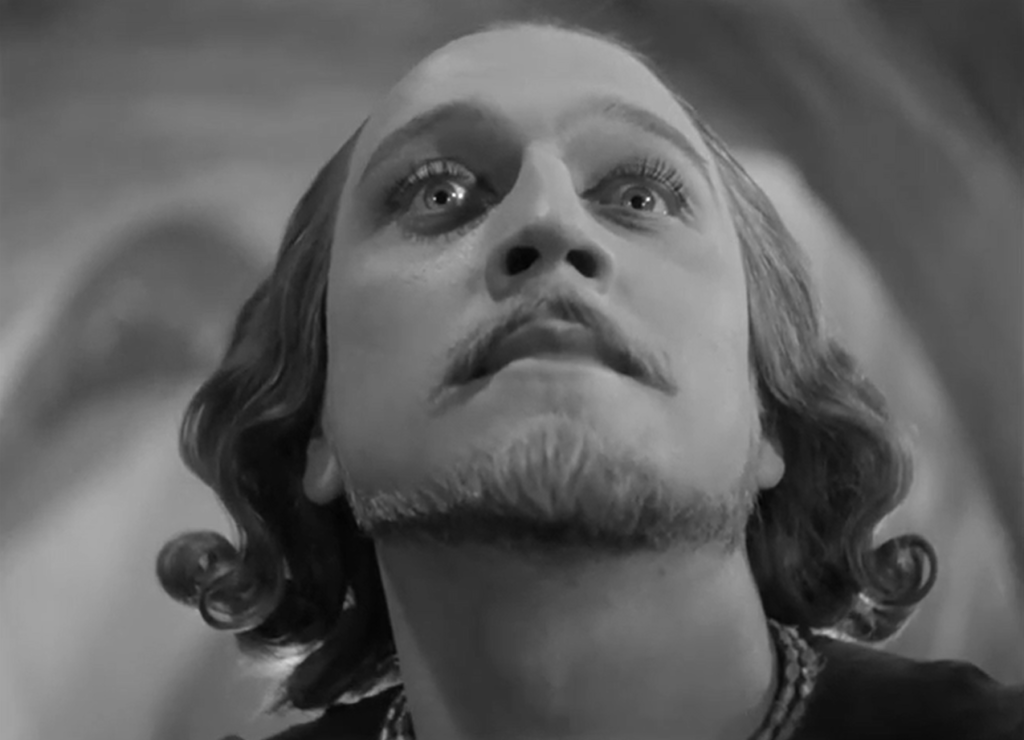
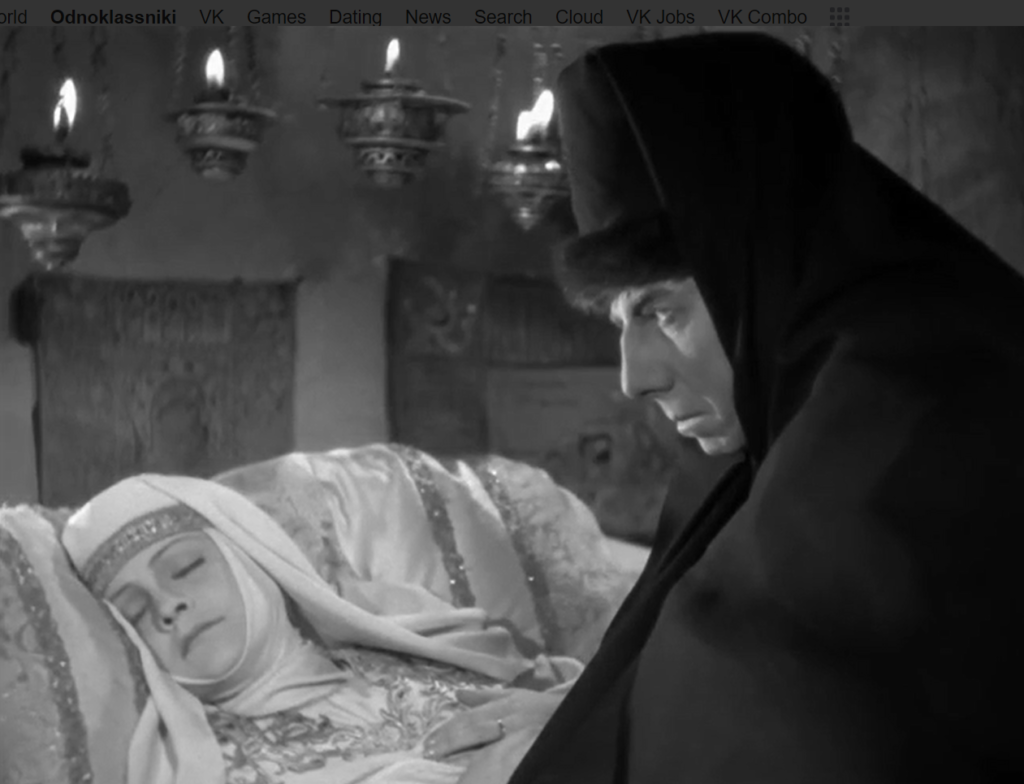
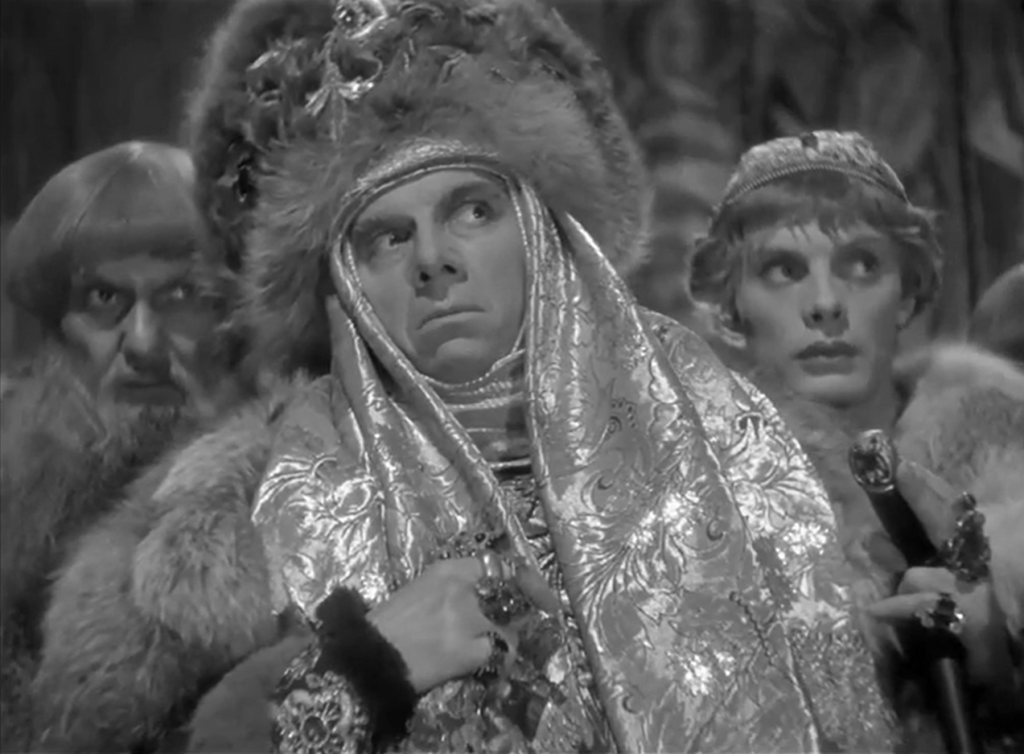
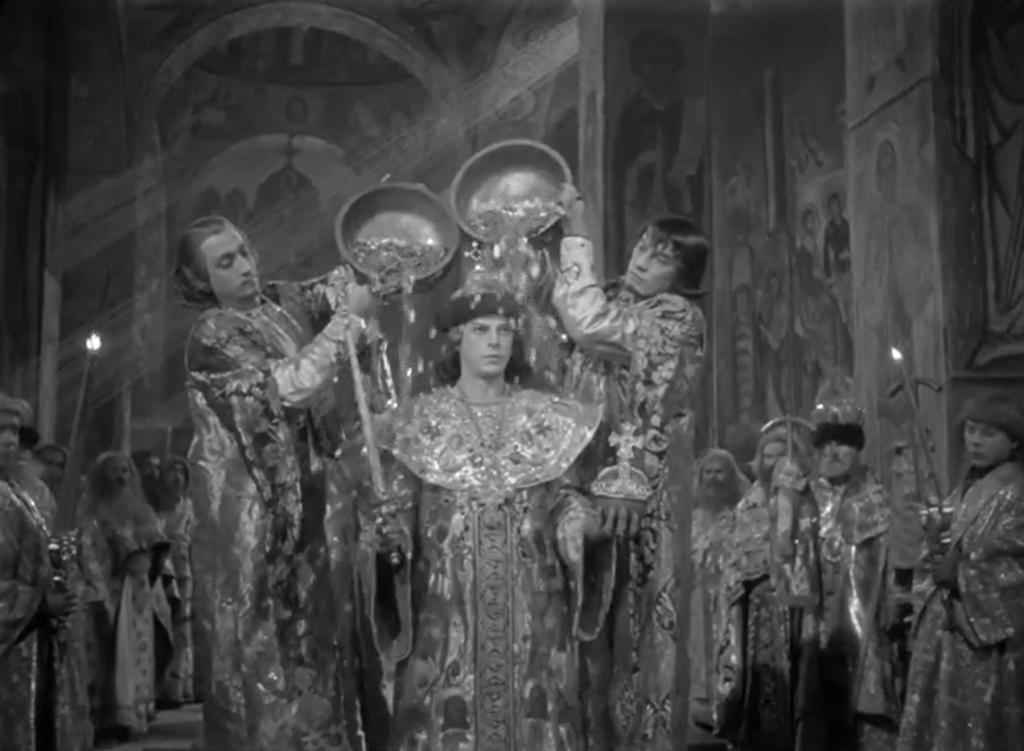
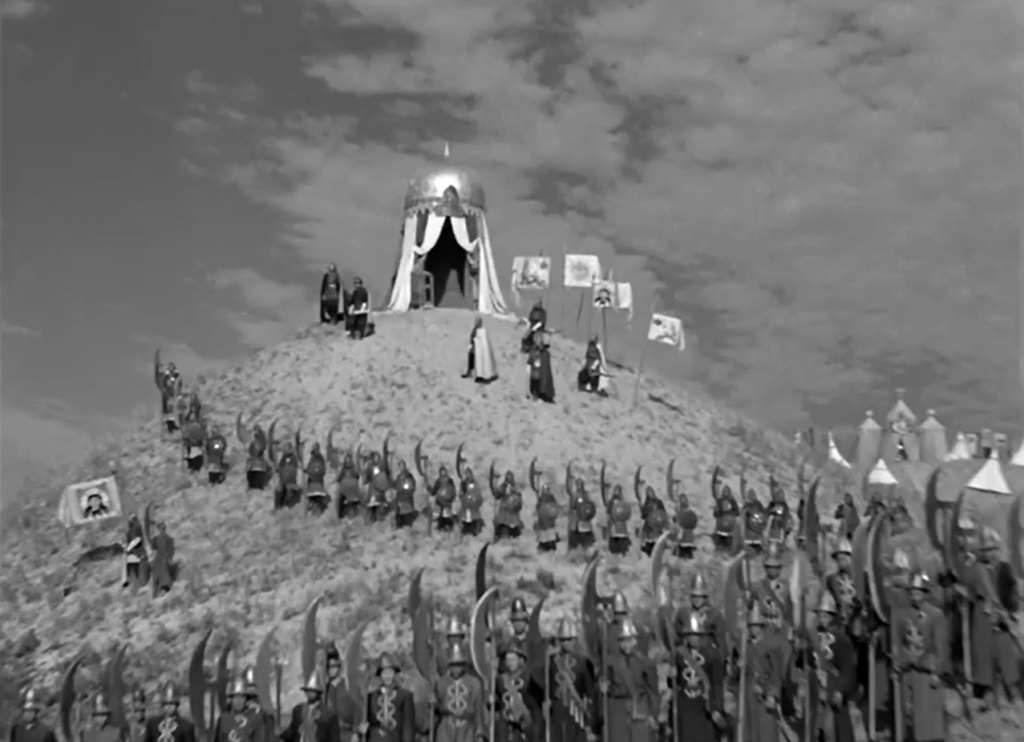
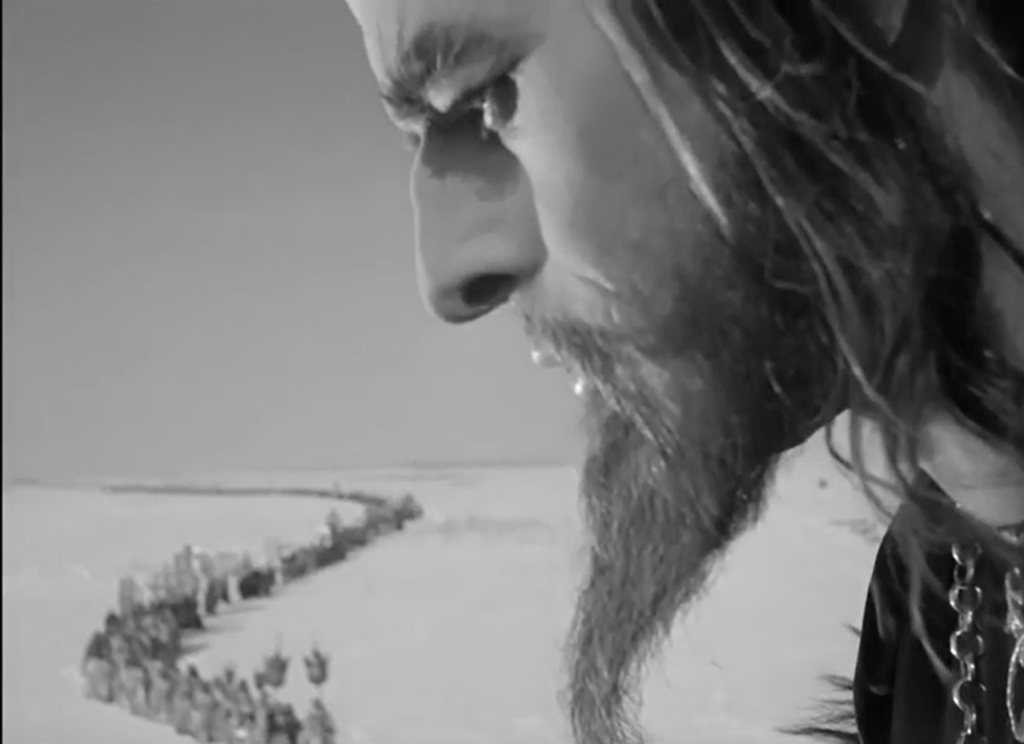
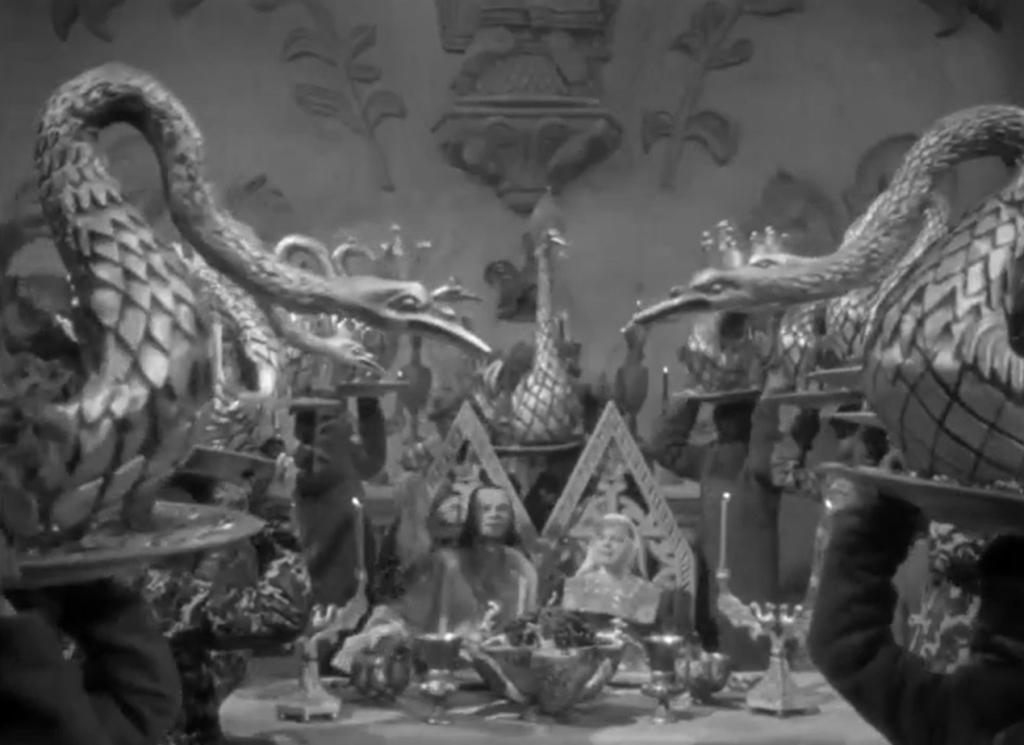

One thought on “Ivan the Terrible, Part I (1944)”
First viewing. A once-must, for its place in Russian cinema history and as a fine piece of craftsmanship by Eisenstein.
I would never have expected a film like this to keep me up past my bedtime! But, from the get-go, I found it riveting and couldn’t interrupt it before it reached the end.
My knowledge of Russian history is somewhat appalling (even though I’ve read a good deal of Russian literature) so I can’t speak for how the film’s view may or may not be at all revisionist. But, for what it attempts to be, it’s clear as a bell and moves like a rocket.
I don’t find it “ludicrously” melodramatic and theatrical, although it is melodramatic and theatrical. However, the spellbinding coronation scene that opens the film also presents a period of fierce political struggle – so the tone feels appropriate. (I just can’t get over those *clothes*!)
As well, Eisenstein does a remarkable job of laying out and defining who is who and what the in-house struggles for power are.
Throughout, the film’s visuals kept reminding me of von Sternberg’s ‘The Scarlet Empress’ but Eisenstein has that film beat in its excess and (esp.) its use of close-ups. (So many *meaningful looks*!) That last shot of Ivan – which seems to want to take up the entire screen – is stunning in its impact.
This film won the Stalin Prize of 1946. Apparently Stalin had no problem with how Eisenstein’s biopic starts out but took real issue with how the story continues in Part 2 (since that film was banned until 1958!).